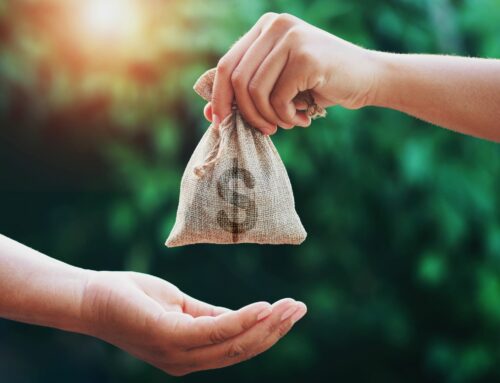Most people think fundraising is all about asking for donations. It is and it’s not.
Fundraising – and I mean good, sustainable, donor-based fundraising – happens in all the little things that lead up to the ask.
It’s a lot like gardening.
You don’t pick the fruit on the day you plant the seeds. 
Being able to pick cucumbers or beans or tomatoes in your own garden depends on several things:
If you’re like me, you may have some additional potions you add to your plants to make them grow big and strong. (My favorite ones come from Jerry Baker.)
Ok, you getting this?
You don’t just decide to eat vegetables and walk out to your garden to pick them unless you do all the other work first.
There won’t be anything to pick if you haven’t first tilled the soil, planted seeds, watered, and weeded.
Same thing in fundraising. You’ve got prep work to do before you can waltz in and start asking for donations.
People need to know who your organization is, like your mission, and trust that you’ll use their money wisely before they’ll give. (It’s called the Know, Like, & Trust factor.)
Fundraising is SO much more than just asking for donations.
In fact, fundraising happens in dozens of things that have nothing much to do with asking for money. Things like:
- Your nonprofit’s reputation
- How compelling your mission is/what your nonprofit stands for
- How clear your message is/what you ask people to support (core number)
- Your Impact Goal and what you’re trying to accomplish
- The strength of your nonprofit’s brand
- How trustworthy you and your nonprofit seem
- Who sits on your Board
- How you answer the phone
- The message on your voice mail
- What your website looks like and how easy it is to navigate
- How easy it is to give online (the fewer clicks, the better)
- What you post on social media
- The quality of your newsletter
- How often and how consistently you send that newsletter
- How the donor feels when they read that newsletter
- Volunteer opportunities you have available and how easy it is to sign up for them
- How welcoming your staff/volunteers are to new people
- How well you thank people
- How good of an experience people have with you when they give
- How well other staff & Board can interact with donors (speak intelligently, know key stats, etc.)
 Your focus and whether its on the donor or their money
Your focus and whether its on the donor or their money- Whether or not you remember their birthday, anniversary, or other special occasion
- How many warm touches you send before you Ask again
- The quality of the tour you give
- The quality of the video on your website’s homepage or at your event
- How you answer emails
- Your ability to spell correctly, especially a donor’s name
- How accurate your donor’s giving history is
- Whether or not you provide a tax summary letter each year
- The quality of the presentation you give to local groups and clubs
- The stories you get in the news each year
- The reputation of others who support you (local celebrities and officials, well-known business people, etc.)
- The check-in process for participants at events
- How easy it is for someone to make a pledge and pledge payments
- How someone feels when they think about your nonprofit
You see, asking for donations is the last step in the process of making the donor feel informed and engaged and part of the team.
Your success in fundraising is all about how the donor FEELS. Think of it as one big game of customer service, giving your donor the BEST experience possible.
When you do that, fundraising gets easy, like picking ripe vegetables – barely touch them and they’ll fall right off the vine and into your hand.







Leave A Comment